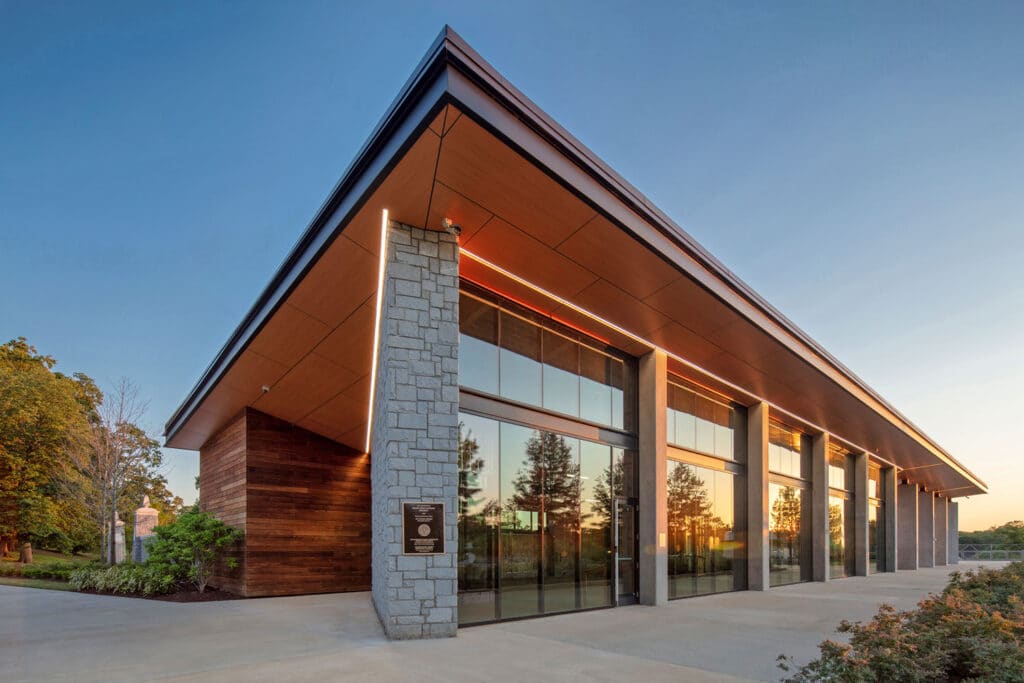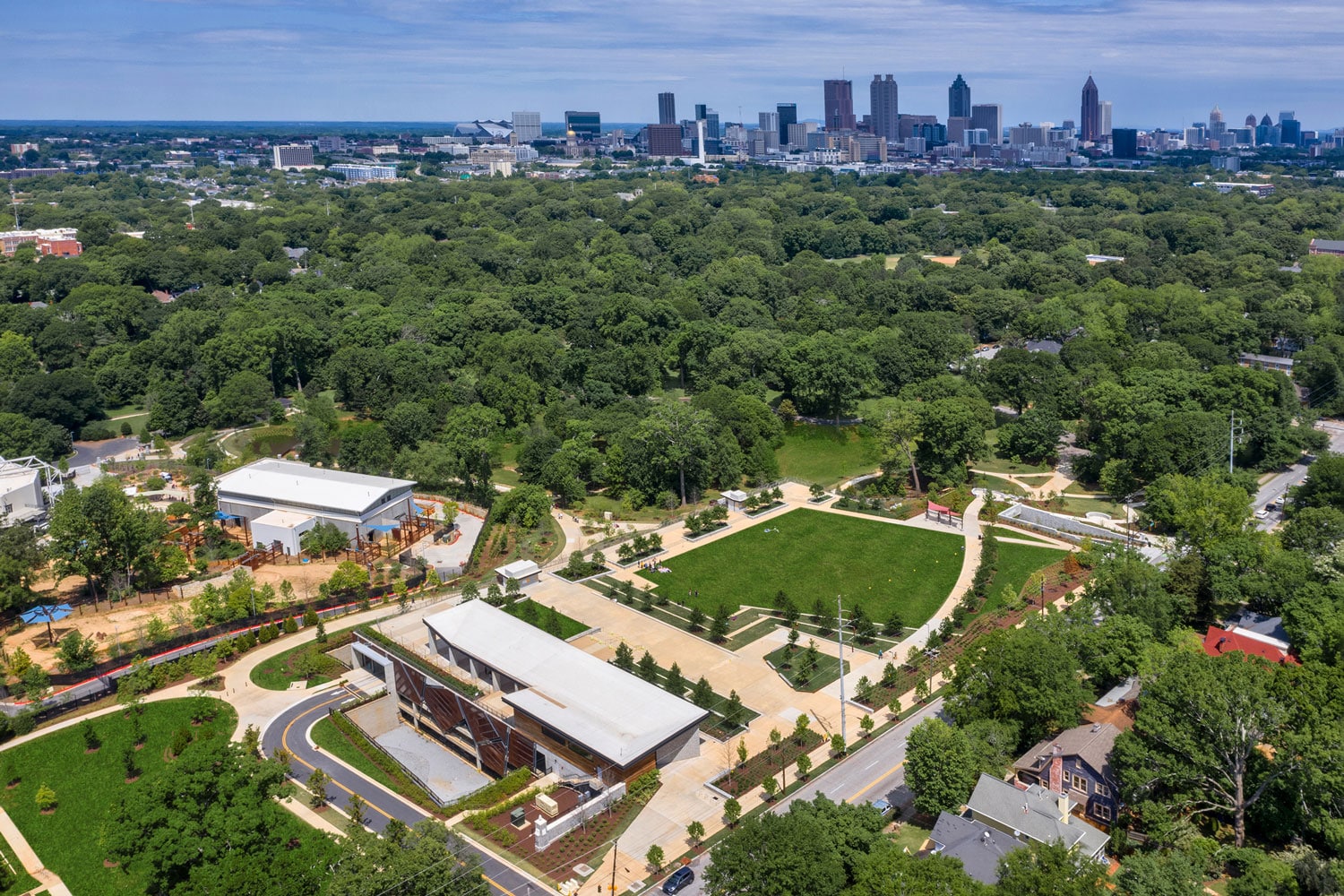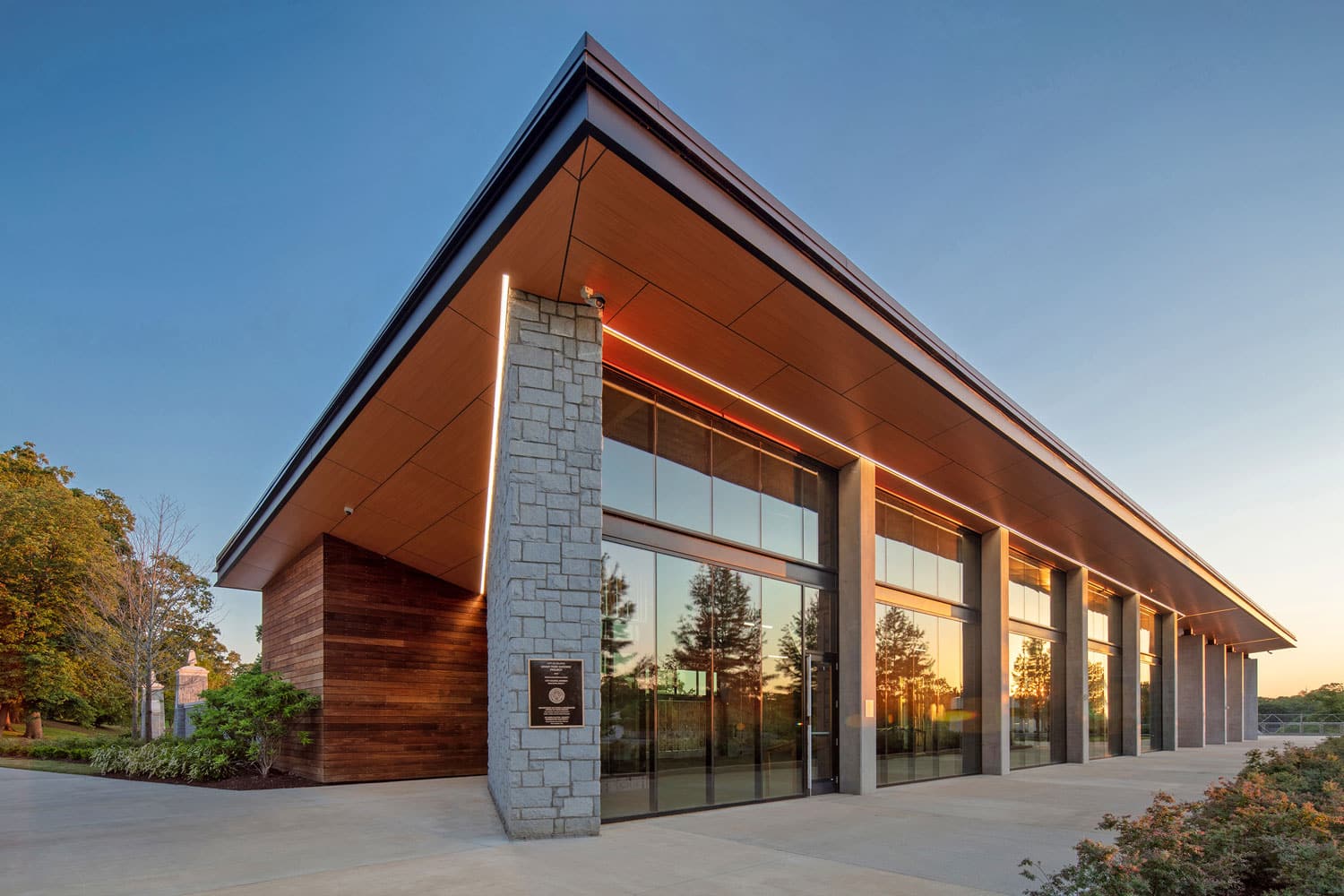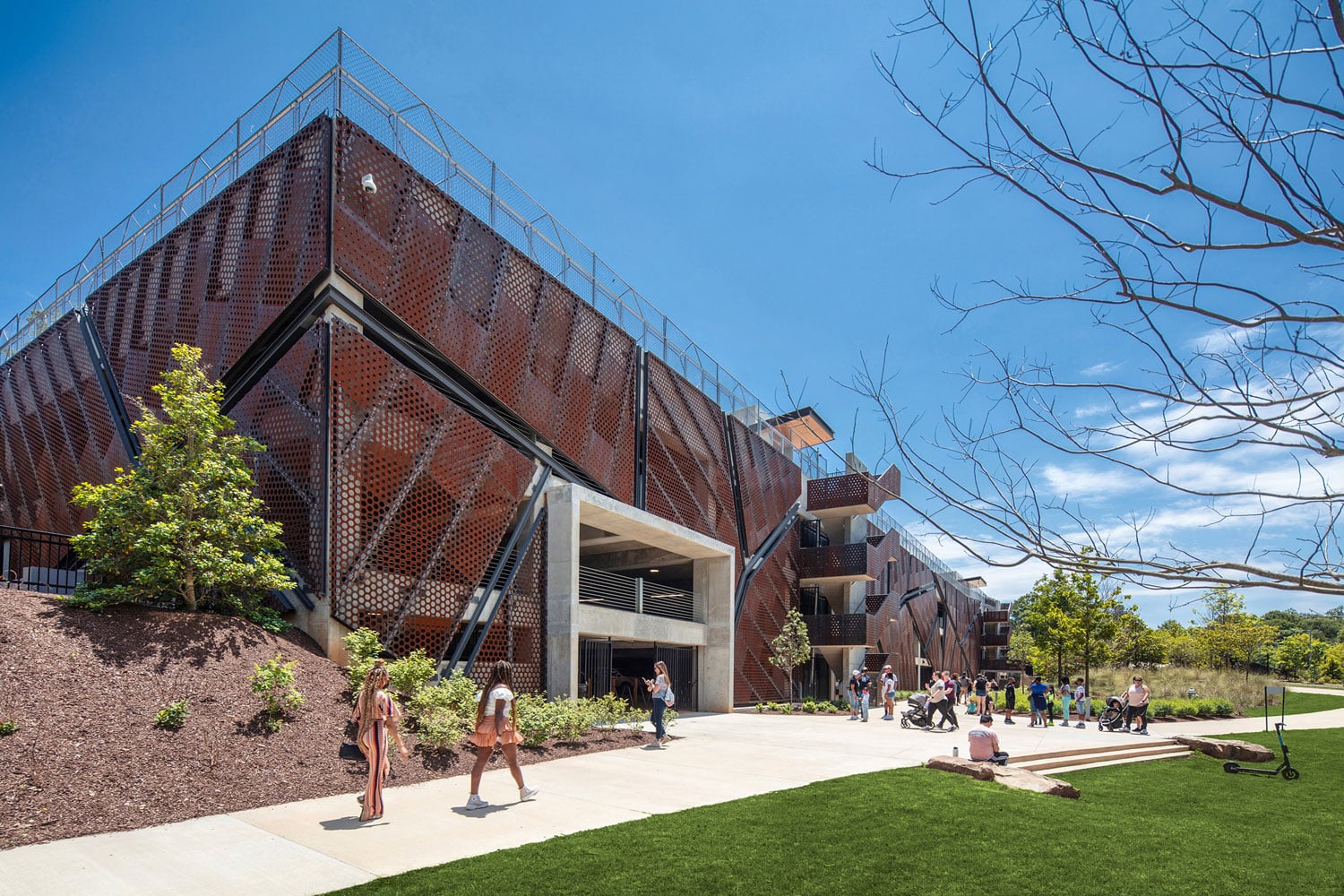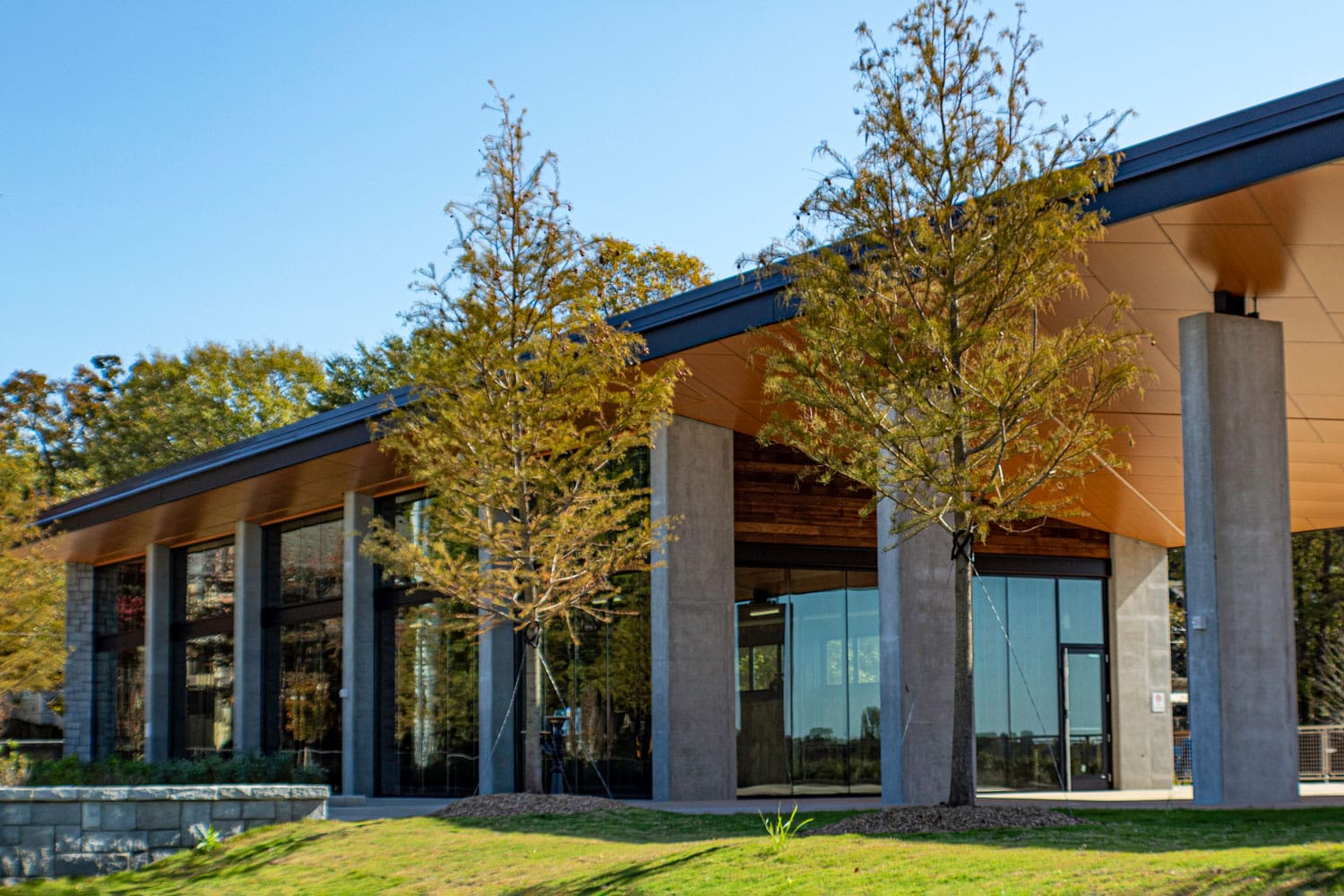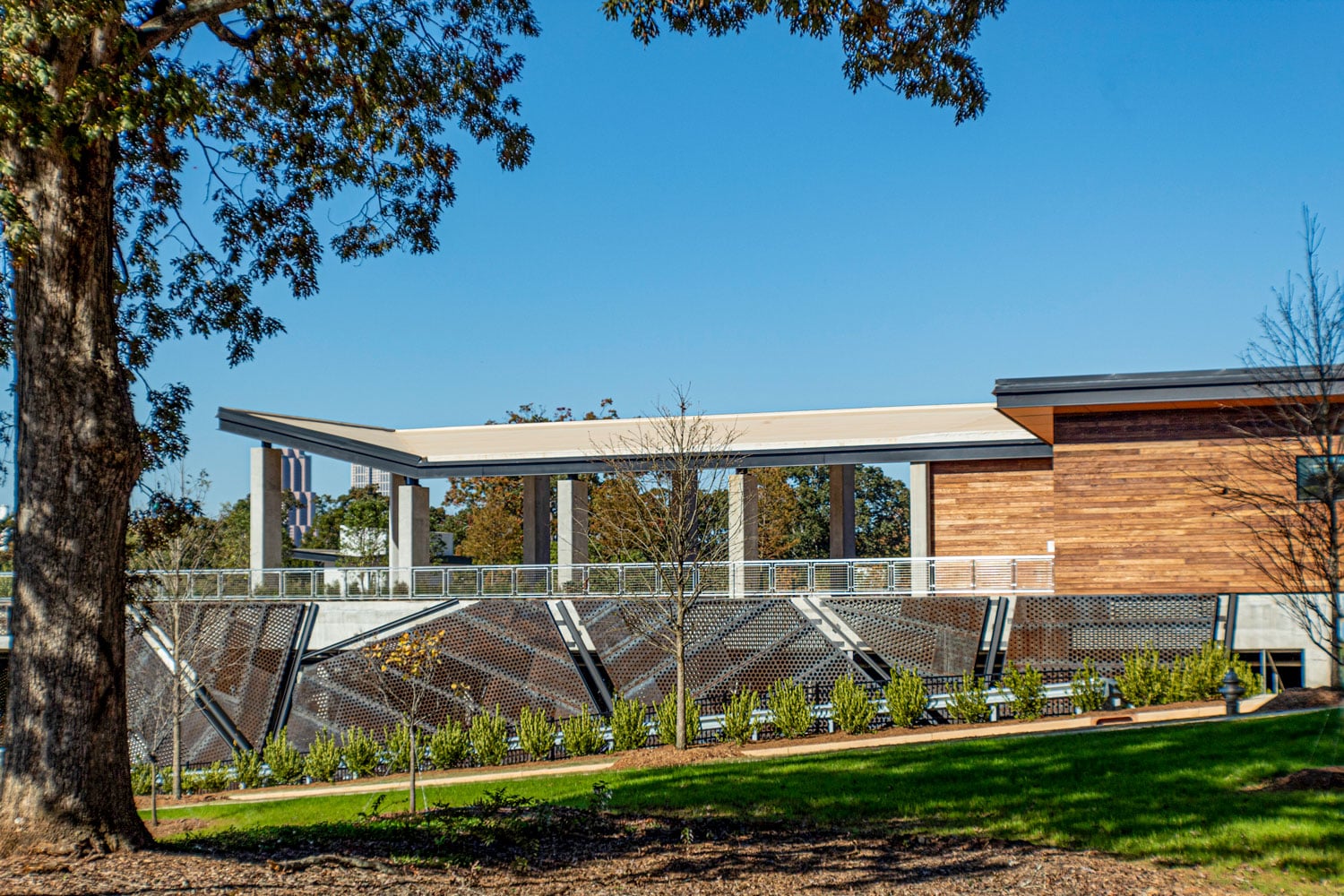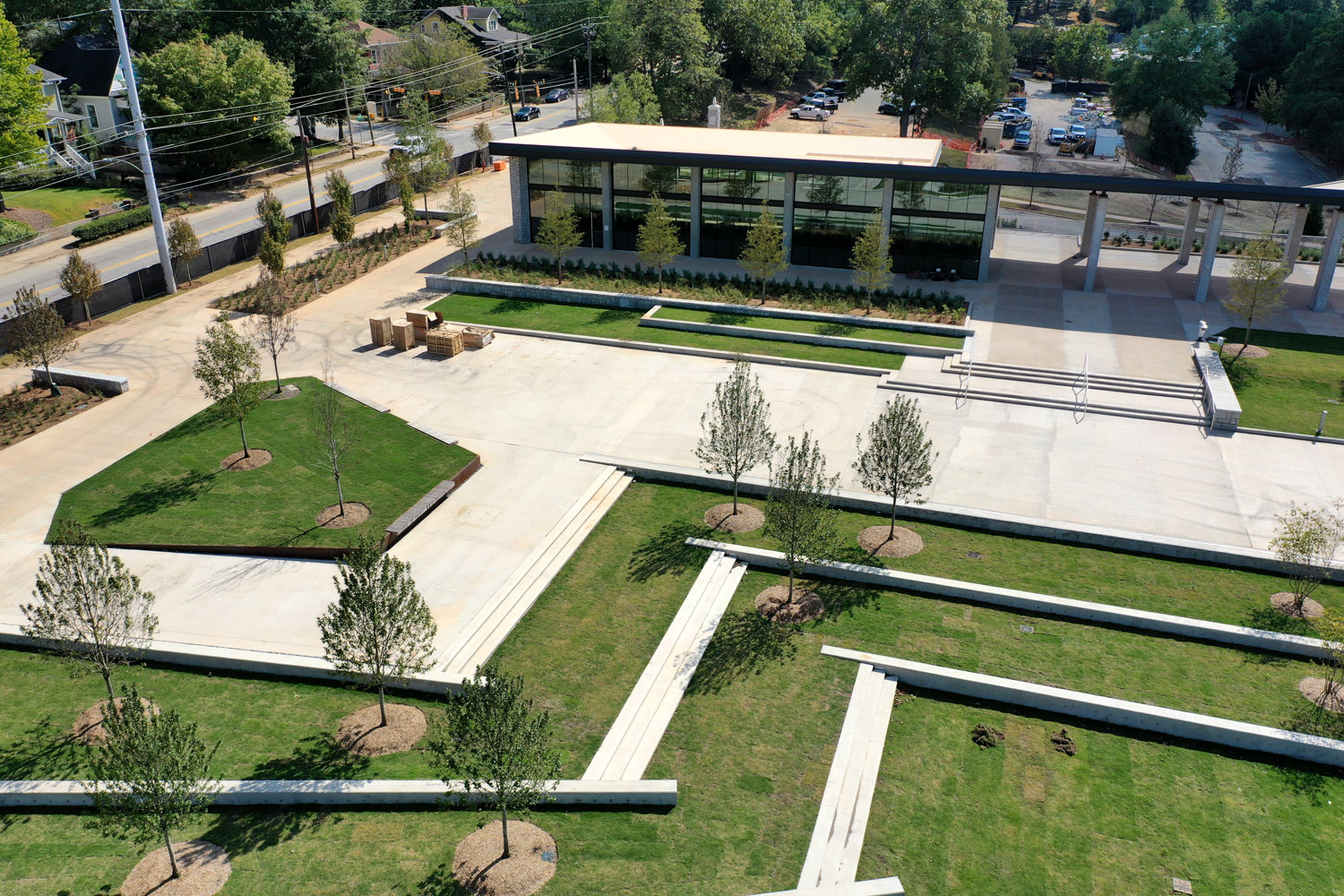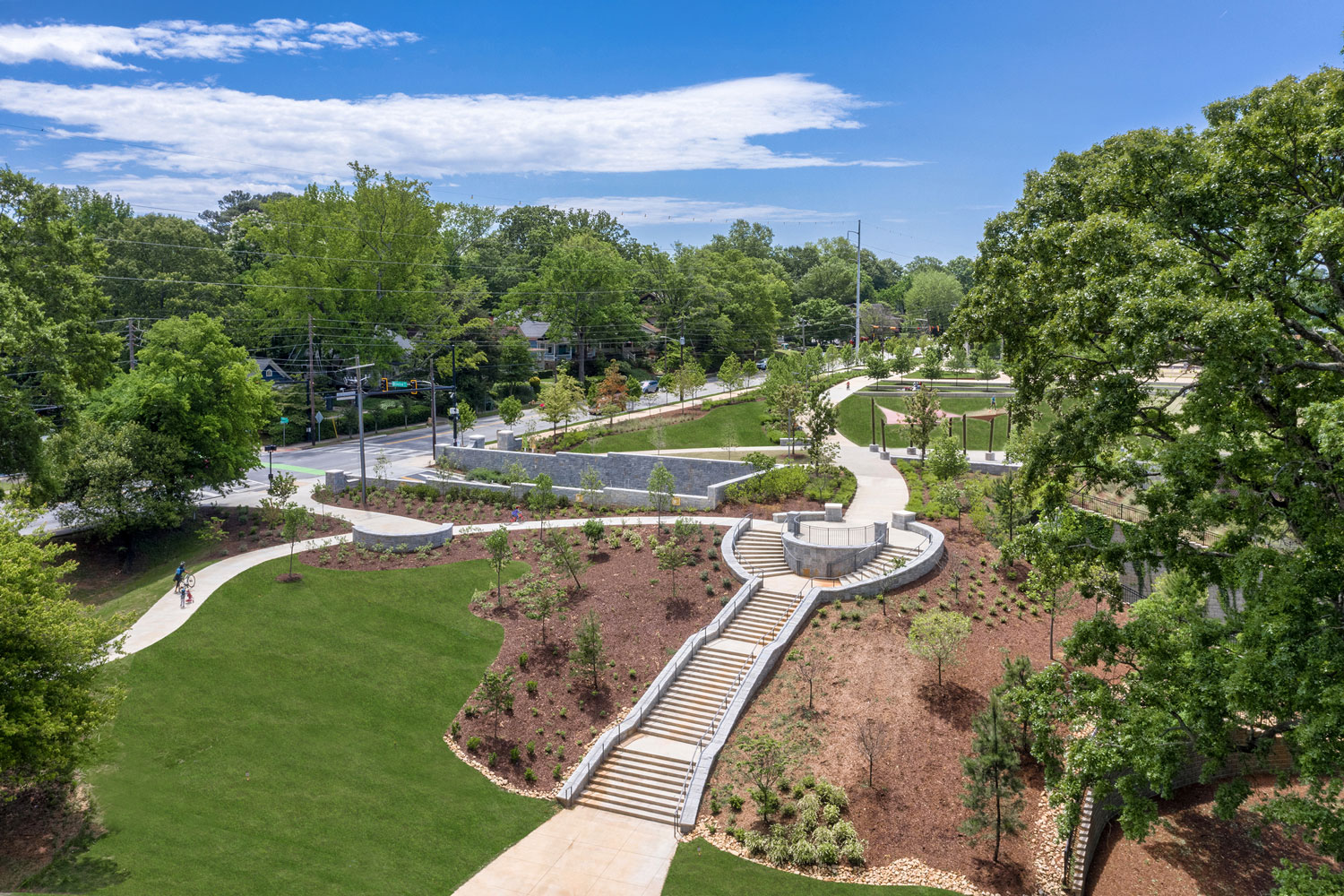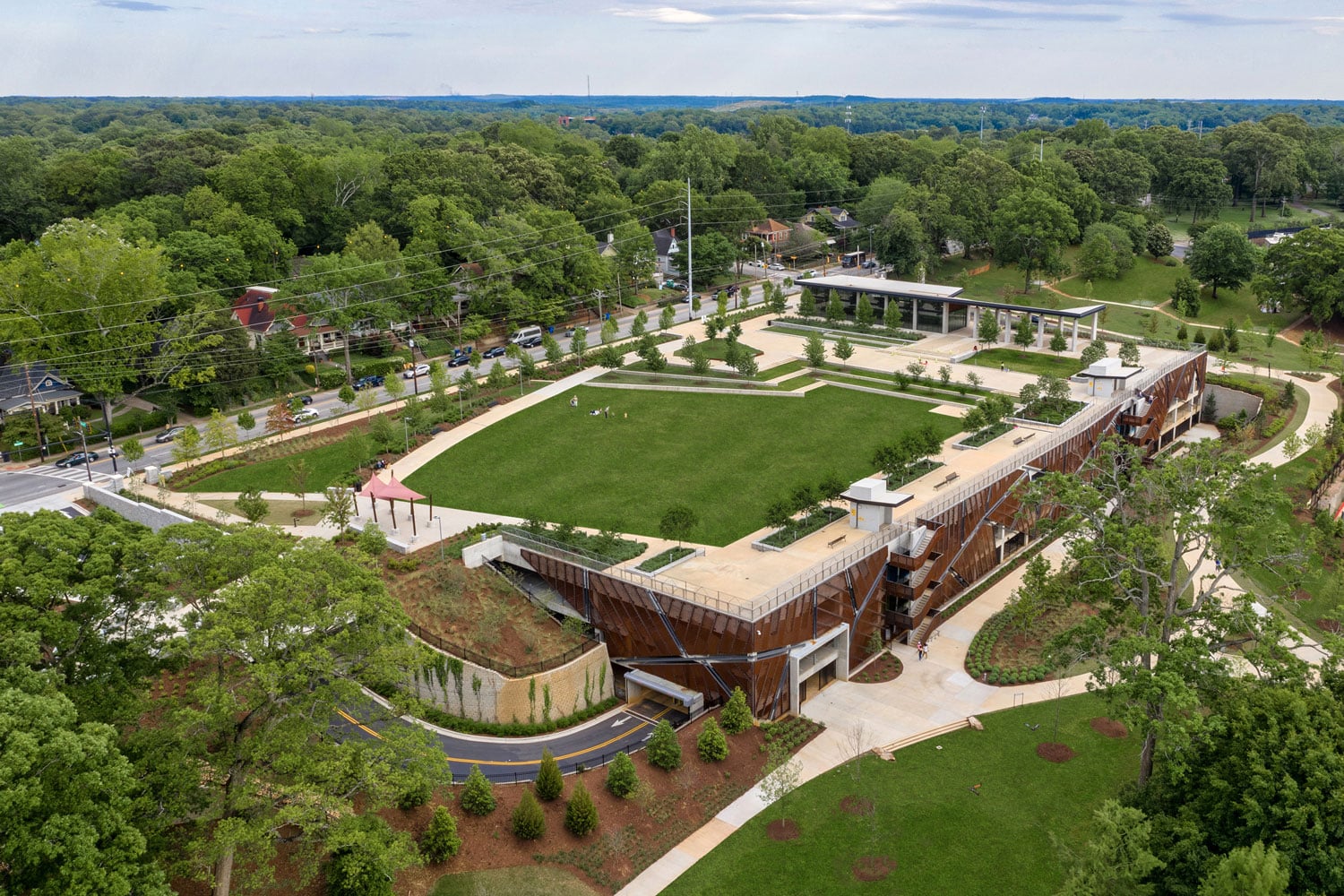
America’s First Triple-Certified Space
Atlanta’s Grant Park Gateway uses Parksmart, SITES & LEED to achieve sustainability goals.
Atlanta’s Grant Park Gateway is the first project in the world to achieve LEED, SITES and Parksmart certifications through GBCI.
The City of Atlanta addressed the need for a new parking garage near Zoo Atlanta and the Beltline, two of the city’s most iconic public spaces. With increased calls to reduce traffic congestion and improve community safety, the existing 8-acre surface parking lot was unable to keep up with increasing demand.
Table of Contents
Faced with a major renovation, Atlanta’s Parks and Recreation Department (DPR) used the opportunity to invest in a multifunctional, sustainable space, using certifications as a tool to direct their work for the greatest community benefit. Instigated by the DPR, this inspirational project transformed an asphalt parking lot into a beautiful community space that now includes a shaded terrace plaza, green roof and restaurant space, acres of greenery, and parking for more than 1,000 vehicles. The Gateway is a testament to what can be accomplished when a project team is able to pursue a holistic vision that balances mobility and accessibility with a sense of place.
In addition to promoting sustainable mobility through bicycle parking, access to a nearby bicycle sharing hub and electric vehicle charging, the garage’s biophilic design strategies and sustainable land development have created a sweeping green space for the Grant Park neighborhood that acts as a destination itself.
Grant Park Gateway also demonstrates how GBCI’s sustainability rating systems can complement one another. The project combined three sustainability certifications: LEED for green buildings, Parksmart for parking structures and SITES for land design and development. While balancing multiple sustainability goals on a project is challenging, rating systems with clear performance thresholds provide guidance to simplify this process and evaluate how to make the greatest impact.
In pursuit of triple certification
“The project scope was a blend of infrastructure, site improvement and new building construction, all of which were equally important,” shared Todd Fuller at HGOR, the landscape architect. “Pursuing multiple certifications created benchmarks for performance appropriate with each individual scope, to ensure that all aspects of the project were high-performing.”
Beth Ament at Epsten Group, the sustainability consultant, described an ordinance put forth by the City of Atlanta in 2017 mandating that all new construction projects owned by the city and of a certain size and cost must achieve LEED Silver certification. Epsten Group reached out to DPR early in the process to share information on Parksmart, since most of the project scope encompasses a parking facility, as opposed to a building.
“Through the work being performed at neighboring Zoo Atlanta, we understood that there was a larger project boundary at play that made SITES certification for sustainable landscape development a reality,” says Ament. “Our teamwork with Breedlove Land Planning and their overall vision for the larger boundary of work is what made SITES possible. We executed due diligence to educate the entire project team about the crosswalks across the different rating systems, helping them to understand that this also meant a reduction in the amount of work needed on our part.”
With the three rating systems, says Ament, there was overlap in requirements that was easy to address within the project scope. “For the LEED project, the number of points available were very slim, and we knew the project could not live up to the city’s requirement of a LEED Silver project. However, we were able to apply our SITES Gold certification to the LEED application. We were awarded all the points within LEED’s Sustainable Sites credit category, pushing the LEED project up to Silver,” explains Ament.
Building Atlanta’s Resilient Future
Grant Park found solutions that accommodated more parking in a greener way, as well as enhancing access for alternative transportation.
“The project removes an existing surface parking lot from Atlanta’s oldest park, and replaced it with usable green space, while improving safety and access for pedestrians and bicyclists coming to the park and within the park,” says Todd Fuller of HGOR, the project’s landscape architect. “Increased parking had the double positive benefit of granting a broader access to the park from residents across the city traveling by car, while relieving the impact of off-street parking that was previously occurring on neighborhood streets,” he adds.
DPR was thrilled to take part in such a transformative project with multiple sustainability features, according to Keith Hicks, director of park design for the city. “[It creates] an inviting and dynamic experience for residents to enjoy gatherings, festivals, recreational activities, outdoor dining and people-watching,” says Hicks.
The City of Atlanta has experienced “explosive growth” in the past few decades, says Ament, and making that increase true “smart growth” is a priority for the Atlanta Office of Resilience. “Equal access to resources, amenities and preservation of the natural environment are all visions set forth for the city,” Ament shares.
The combined certifications for this project reflect a resilient strategy and far exceed the City of Atlanta’s Ordinance 17-9-128, Sustainable Development Design Standards. And as the first space in the world certified to LEED, SITES and Parksmart, the project serves as an example not just for Atlanta, but for any city around the globe.
The many teams involved in Grant Park Gateway’s development proved that through integrative, thoughtful, and creative design, a parking lot can become an extraordinary space.
Sumner Byrne, LEED GA, is Senior Manager of Product Marketing for Green Business Certification Inc. (GBCI) and the U.S. Green Building Council (USGBC).
-
This author does not have any more posts.


Parking on Plastic
A New Frontier in Sustainability

Passport launches Text to Pay for Parking in Cities Nationwide
Passport launches Text to Pay for parking in cities nationwide


